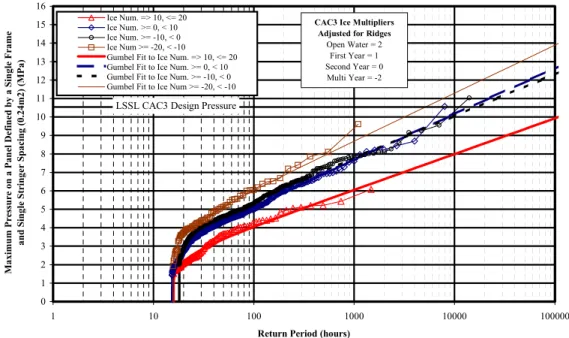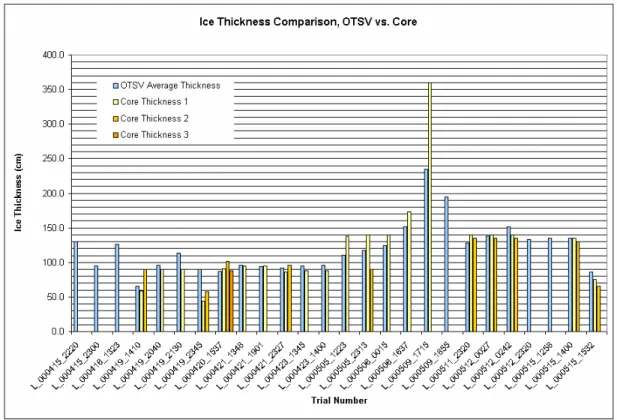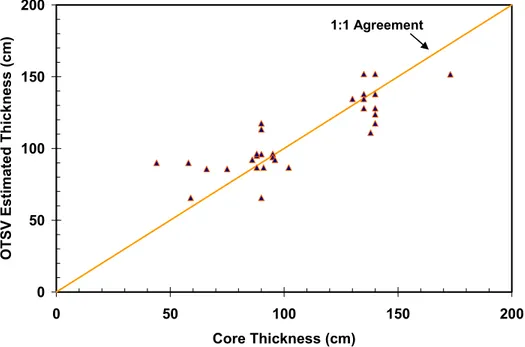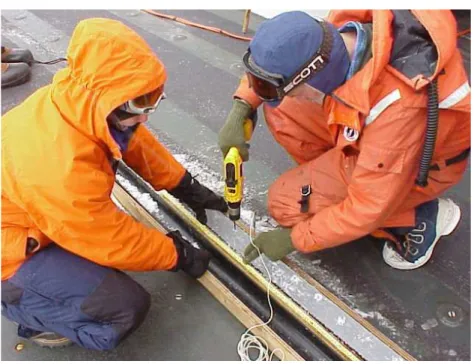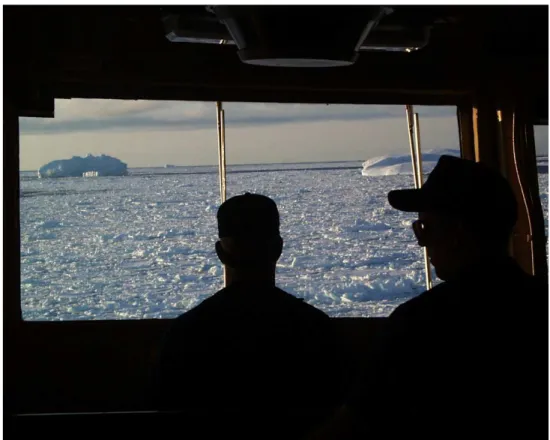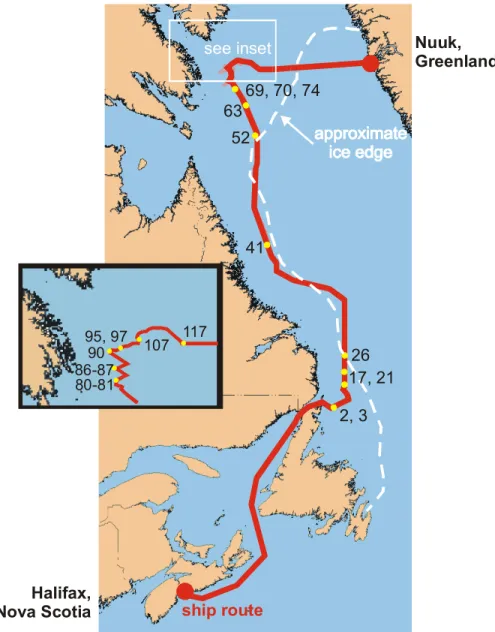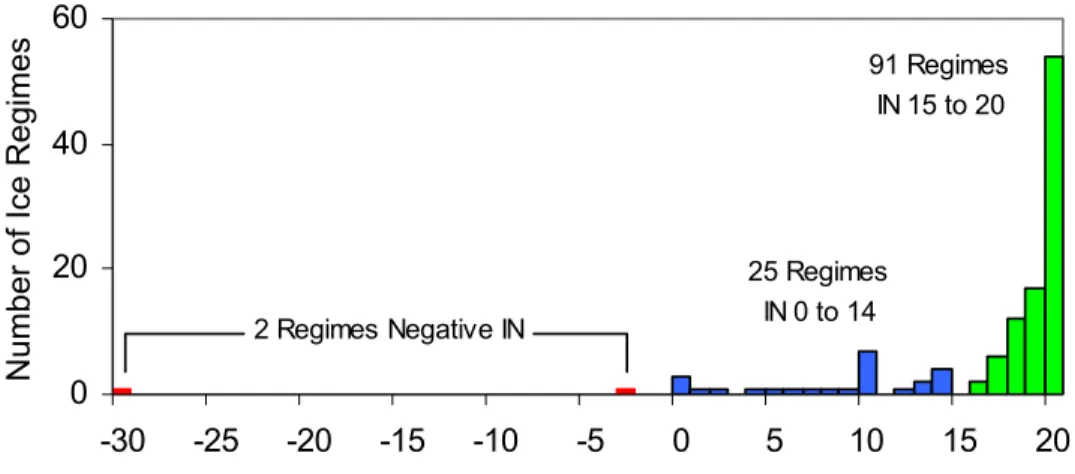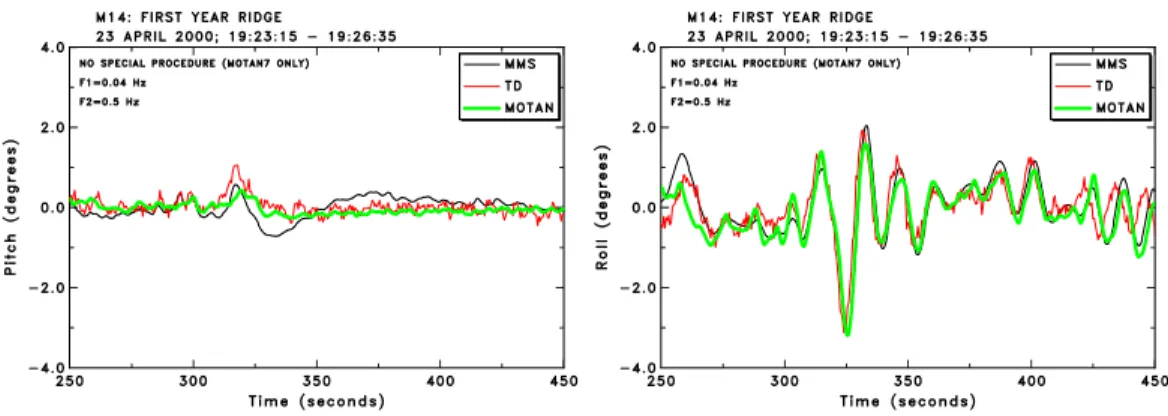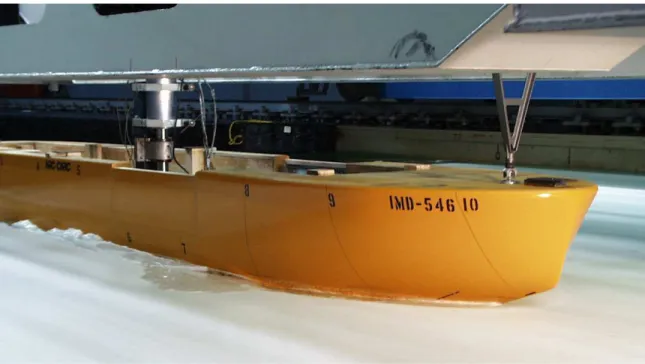Publisher’s version / Version de l'éditeur: Technical Report, 2001-11
READ THESE TERMS AND CONDITIONS CAREFULLY BEFORE USING THIS WEBSITE.
https://nrc-publications.canada.ca/eng/copyright
Vous avez des questions? Nous pouvons vous aider. Pour communiquer directement avec un auteur, consultez la première page de la revue dans laquelle son article a été publié afin de trouver ses coordonnées. Si vous n’arrivez pas à les repérer, communiquez avec nous à PublicationsArchive-ArchivesPublications@nrc-cnrc.gc.ca.
Questions? Contact the NRC Publications Archive team at
PublicationsArchive-ArchivesPublications@nrc-cnrc.gc.ca. If you wish to email the authors directly, please see the first page of the publication for their contact information.
Archives des publications du CNRC
For the publisher’s version, please access the DOI link below./ Pour consulter la version de l’éditeur, utilisez le lien DOI ci-dessous.
https://doi.org/10.4224/12327709
Access and use of this website and the material on it are subject to the Terms and Conditions set forth at
Canadian R&D participation in the USCGC Healy ice trials (2000)
Santos-Pedro, V. M.; Timco, G. W.
https://publications-cnrc.canada.ca/fra/droits
L’accès à ce site Web et l’utilisation de son contenu sont assujettis aux conditions présentées dans le site LISEZ CES CONDITIONS ATTENTIVEMENT AVANT D’UTILISER CE SITE WEB.
NRC Publications Record / Notice d'Archives des publications de CNRC: https://nrc-publications.canada.ca/eng/view/object/?id=553992cc-b91e-4dd2-856a-fa074fa4990e https://publications-cnrc.canada.ca/fra/voir/objet/?id=553992cc-b91e-4dd2-856a-fa074fa4990e
TP 13873 E
Canadian R&D Participation in the
USCGC Healy Ice Trials (2000)
V.M. Santos-Pedro
1and G.W. Timco
21
Transport Canada,
Ottawa, Ont., K1A 0N8 Canada
2
National Research Council,
Ottawa, Ont., K1A 0R6 Canada
Technical Report
HYD-TR-068
ABSTRACT
The Canadian Government was invited to participate in the ice trials of the USCGC Healy that took place in the spring 2000 off Baffin Island. Transport Canada was the lead agency in the liaison with the US Coast Guard, and the National Research Council of Canada (NRC) led the Canadian scientific involvement. This report provides an overview of the preparations leading to Canada’s participation in the ice trials program, and provides a detailed summary of the Canadian scientific results.
TABLE OF CONTENTS
ABSTRACT... 1
TABLE OF CONTENTS... 3
LIST OF FIGURES ... 4
1.0 INTRODUCTION ... 5
2.0 CANADA/US R&D COLLABORATION... 5
3.0 ARCTIC COOPERATION AGREEMENT ... 6
4.0 PRE-TRIAL ARRANGEMENTS ... 7
5.0 CANADIAN R&D PROJECTS ... 8
5.1 Analysis of Past Icebreaking Trials ... 8
5.2 Ice Properties – Thickness and Strength... 9
5.3 Ice Regimes Encountered during the Trails – First Leg ... 13
5.4 Whole Ship Motions and Global Loads... 15
5.5 Manoeuvrability Tests ... 17
6.0 FINAL SUMMARY ... 18
7.0 ACKNOWLEDGEMENTS... 19
8.0 REFERENCES ... 19 Appendix A – Report: Previous Experience
Appendix B – Report: Ice Properties Appendix C – Report: Ice Regimes Appendix D – Report: MOTAN Results
Appendix E – USCGC Healy Workshop Minutes
LIST OF FIGURES
Figure 1: Plot of the Pressure versus return period for the Louis S. St-Laurent in 1994. The results relate to the bow panel and show all speeds. Note the hull pressures increase with decreasing Ice Numerals (after Browne, 2000). ... 9 Figure 2: Ice thickness for different ship trial events showing a comparison of the OTSV video technique with cores (after Jones et al. 2000) ... 10 Figure 3: Plot of the ice thickness estimated using the OSTV technique with that
measured using cores in the same region, for first-year level ice. ... 11 Figure 4 : Photo of RapidCore………..11 Figure 5: Photograph showing a temperature measurement on a new core ... 12 Figure 6: Flexural strength calculated from RapidCore measurements throughout the
course of the trials. Note the higher strength values for multi-year ice. ... 12 Figure 7: Observations of the ice regimes from the Bridge of the USCGC Healy... 13 Figure 8: Map illustration showing the general location of the ice regimes encountered
during the first leg of the trials (after Johnston and Gorman, 2000)... 14 Figure 9: Illustration of the range of Ice Numerals encountered by the Healy during the trials (after Johnston and Gorman, 2000)... 15 Figure 10: Measured pitch and roll during Event M14. Note the good comparison of
MOTAN data with other shipboard instrumentation (after Johnston et al. 2000). ... 16 Figure 11: Measured pitch and roll for the 17 Events recorded by the MOTAN on the
Healy (after Johnston et al., 2000). ... 16 Figure 12: Calculated vertical force on the bow of the Healy during Event M14 (after
Johnston et al., 2000). ... 16 Figure 13: Photograph of the model of the USCGC Healy in the IMD basin ... 17
Canadian R&D Participation in the
USCGC Healy Ice Trials (2000)
1.0 INTRODUCTION
The Canadian Government was invited to participate in the ice trials of the USCGC Healy that took place in the spring 2000 off Baffin Island. Transport Canada was the lead agency in the liaison with the US Coast Guard, and the National Research Council of Canada (NRC) led the Canadian scientific involvement. This report provides an overview of the preparations leading to Canada’s participation in the ice trials program, and provides a summary of the scientific results. Copies of the Canadian scientific reports and published papers are reproduced in the Appendices of this report.
2.0 CANADA/US R&D COLLABORATION
The formal Memorandum of Understanding between the United States Department of Transportation and Transport Canada concerning Research and Development cooperation in transportation dates back to June 1970. The Joint Research project for the ice trials aboard the new US icebreaker Healy would come under Addendum III, the Marine Transportation Systems and Technology Research. Formally and informally collaboration between the US and Canada on marine related topics has continued over several decades to provide results otherwise not possible without these collaborative and complementary efforts. The program took place under the auspices of the 1988 agreement as no Volpe/Jamieson JRPA was signed.
Transport Canada’s initial focus in response to an invitation to take part in this project, was to propose the installation of a leading edge Canadian laser ranging optical propeller blade deflection measuring system. Documenting ice loads on propellers fits in with the long-term approach to substantiate revisions of regulatory requirements. Lately, it also serves to validate proposals for the draft Machinery Unified Requirements (UR) for Polar Ship Rules under development by IACS, the International Association of Classification Societies. The URs are a comprehensive and unprecedented set of hull and machinery provisions that underpin the International Maritime Organization (IMO) draft Guidelines for Ships Operating in Ice-covered Waters. When the USCGC Healy ice trials were moved from Alaska to Canada’s Arctic East Coast, and the pre-trial drydocking was no longer available for instrumentation purposes, Canada’s sights turned to other R&D priorities.
The Ice Regime System was an obvious candidate as the most recent update to the Canadian Arctic regulations. Yet to be fully implemented, additional experience for the
ongoing evaluation of its application is always welcome and provides valuable data for future analyses. The opportunities derived from sea/ice trials are difficult to resist when so many activities supplement each other on a single platform where reliable measurements abound for every facet of ship operations.
In line with the Arctic Ship Technology program devised by the US Coast Guard, the National Research Council coordinated and led a series of projects with an emphasis on ship safety and pollution prevention rather than performance - the objective of many other initiatives. Access to all the data collected will help to identify gaps and give support in updating standards including the Arctic Guidelines being developed at IMO. The work by the Canadian team centred on ice conditions and ice properties, validation of the ASPPR Ice Regime System, and vessel response in different ice conditions. The ASPPR Ice Regime System is a Transport Canada proposal to update the Arctic Shipping Pollution Prevention Regulations (ASPPR 1989; Canadian Gazette 1996; AIRSS 1996). In this new system, an "ice regime" is defined as a region of generally consistent ice conditions. The Arctic Ice Regime Shipping System (AIRSS) is based on a simple arithmetic calculation that produces an Ice Numeral that combines the ice regime and the vessel’s ability to navigate safely in that region. An Ice Numeral is calculated for the ice regime from IN=
∑
Ca IMawhere IN is the Ice Numeral, Ca is the Concentration in tenthsof ice type “a”, and IMa is the Ice Multiplier for ice type “a”. The Ice Multiplier is different for different vessel classes and ice types (see ASPPR 1989). The Ice Numeral is therefore unique to the particular ice regime and ship operating within its boundaries.
3.0 ARCTIC COOPERATION AGREEMENT
The Arctic Cooperation Agreement of 1988 facilitates the transit of US and Canadian government icebreakers through each others Arctic waters, and provides for joint science programs and the sharing of related research. Because US icebreakers are not specifically designed so as to meet Canadian ship standards under the Arctic Waters Pollution Prevention Act, each transit is preceded by negotiations under which Canada obtains evidence of the equivalency of the US icebreaker to the Canadian standards. Plans, calculations and operational details were submitted in late November 1999, and were reviewed and accepted by Order-in-Council by mid-March 2000, just in time for the trials.
Part of the Canadian review process included consultation with organizations, agencies, and individuals with an interest in the activity, which is this case was to happen mostly in the new territory of Nunavut. The Arctic Office of the Canadian Coast Guard agreed to lead the northern consultations. Ross MacDonald and Patricia MacDonald sent letters to federal and territorial officials, Mayors, and Hunters & Trappers Associations from communities along the icebreaker’s proposed route. For the town-hall style meetings at the two communities where the ship might come nearby, translation services were contracted and a plane chartered for the single day visit to each site.
In early December 1999, representatives from the US Coast Guard, including the icebreaker’s Commanding Officer, Captain Jeff Garrett, joined Transport Canada for a round of visits, planned and well organized by and with the participation of the Canadian Coast Guard. In Iqaluit, the group met officials from federal and territorial government departments and agencies with marine and environmental interests. In Clyde River and Broughton Island, the community meetings were well attended and attracted enough attention for a useful exchange of information. Arrangements were initiated to have local representatives on board while the vessel was in ice trials in the vicinity of the communities later in the spring. Preparation, and Capt. Garrett’s receptive and open approach to local concerns were important factors to the success of the consultations.
4.0 PRE-TRIAL ARRANGEMENTS
The chronology of events is an easy task when compared to dissecting the make-up of any multi-project R&D program. Canada’s participation evolved as the schedule, itinerary, and location of the trials changed sufficiently to alter original plans that were simply focused on propeller ice loads. The final schedule placed the ice trials in the Davis Strait off Baffin Island for May 2000, and the ship transiting the Northwest Passage later in July.
Planning for the ice trial themselves attained a level of complexity requiring military precision. Indeed, the entire trials program was coordinated by LCDR Alfred O. Gaiser of the United States Navy. Canadian representatives first met with US counterparts in August 1998, during a meeting at the University of Rhode Island Graduate School of Oceanography. The ice trails were then scheduled for February 2000 off the coast of Alaska, after drydocking in Seattle following a transit through the Northwest Passage that would have happened in October 1999. Representatives from Transport Canada and the Institute of Marine Dynamics (IMD) of NRC, St. John’s, Newfoundland, presented a program centred on propeller blade deflection measurements and collecting ice data using the RapidCore (see later). Soon after, Canadian instrumentation experts visited the ship under construction at the Avondale Shipyards in New Orleans, Louisiana.
The Canadian team did not attend the next ice trial meeting in New Orleans at the end of February 1999. The delay and change of location for the ice trials was a chance to refocus the research project onto ice regimes validation and associated matters. Under the leadership of the co-author Dr. Garry Timco of the Canadian Hydraulics Centre (CHC) of the NRC, Ottawa, Ontario, the R&D program took shape over the summer, after many permutations and options considered, accepted or discarded on merit. Meetings were held with US representatives in Ottawa and Washington on a variety of issues and trip logistics that included officials from the Canadian Coast Guard. CDR George DuPree of the Commandant’s office at the US Coast Guard Headquarters, and Rubin Sheinberg and Pete V. Minnick from the USCG Engineering Logistics Center were of great assistance as contacts and in facilitating all the arrangements.
By the final planning meeting back in New Orleans at the end of October 1999, Canadian participation was firm and with a solid R&D program, as described here, that at once contributed to and gained from the overall effort. Canada provided funding in the order of US$250K, the US Coast Guard US$750K, and at least another US$750K taking into account other contributors and ship’s time for dedicated trials. The on-board members from Canada during the First Leg of the Trials (Halifax – Nuuk) were Dr. M. Johnston (CHC/NRC), Mr. C. Kirby (IMD/NRC), and Mr. R. Gorman (Enfotec). During the Second Leg of the Trials (Nuuk – St. John’s), Dr. S. Jones (IMD/NRC), Mr. C. Meadus (IMD/NRC) and Mr. R. Wolfe (Transport Canada) were on board.
5.0 CANADIAN R&D PROJECTS
The following R&D Projects were carried out as part of the USCGC Healy ice trials: 1. Analysis of Past Icebreaking Trials
2. Measurement of Ice Properties, Strength and Thickness 3. Identification of Ice Regimes during the Trials
4. Measurement of Whole Ship Motions and Global Loads on the USCGC Healy 5. Model Tests of the Manoeuvrability USCGC Healy
Each of these projects is briefly described below. Complete information on the projects can be obtained from the report identified with each project.
5.1
Analysis of Past Icebreaking Trials
Before the Healy trials, Robin Browne & Associates was contracted to analyse some past icebreaking trials to present a method for analysis of local pressure values (Browne, 2000). This work was related to the Ice Numeral, which is calculated as discussed above. Browne analyzed the results of the North Pole Voyages of the Louis S. St. Laurent in 1994, and of the Oden in 1991 and 1996. In all cases, these vessels were instrumented to measure hull loads, and detailed records were made of the voyage ice conditions. Analysis of these three Pole Voyage data sets, specifically with regard to trafficability, was carried out and related to the Ice Numeral.
The subsequent statistical analysis of ice and hull interaction loading, which is described in Browne’s report, has provided evidence that the current AIRSS system is logical and effective. Specifically, Browne showed that:
• The risk of damage increases significantly and logically as Ice Numeral decreases from large and positive to large and negative (see Figure 1).
• The rate of change in damage risk with change in Ice Numeral varies with ship design and hull area. Browne made logical explanations for these differences.
• The return period for the onset of damage, at the allowable Ice Numeral of zero, is similar to that assumed in derivation of the design requirements.
• Experienced Masters appear to manage risk of damage, voluntarily, through experience and due caution, as anticipated by the rules, without the need for additional regulation of speed.
• There appears to be some advantage of lower damage risk, when an escorting vessel stays reasonably close to the escorted vessel, and vice-versa.
• The current rule Ice Multipliers appear to be effective in determining the overall severity of ice regimes.
Browne’s report presented a logical methodology for analysis of the results of the USCGC Healy Trials. The report is reproduced in Appendix A.
0 1 2 3 4 5 6 7 8 9 10 11 12 13 14 15 16 1 10 100 1000 10000 100000
Return Period (hours)
Maxi mum Pr es su re on a Pane l De fi ne d by a Si ngl e Fr ame and Si ngl e St ri nge r Spac ing ( 0 .24m2) ( M Pa) Ice Num. => 10, <= 20 Ice Num. >= 0, < 10 Ice Num. >= -10, < 0 Ice Num >= -20, < -10
Gumbel Fit to Ice Num. => 10, <= 20 Gumbel Fit to Ice Num. >= 0, < 10 Gumbel Fit to Ice Num. >= -10, < 0 Gumbel Fit to Ice Num >= -20, < -10
LSSL CAC3 Design Pressure
CAC3 Ice Multipliers Adjusted for Ridges
Open Water = 2 First Year = 1 Second Year = 0 Multi Year = -2
Figure 1: Plot of the Pressure versus return period for the Louis S. St-Laurent in 1994. The results relate to the bow panel and show all speeds. Note the hull pressures increase with decreasing Ice Numerals (after Browne, 2000).
5.2
Ice Properties – Thickness and Strength
Members of the Institute for Marine Dynamics (IMD/NRC) were on board during the full ice trials and provided detailed information on the sea ice properties, specifically ice thickness and strength (Jones et al. 2000, 2001; Appendix B). They used 2 different approaches – the Over-The-Side-Video (OTSV) for ice thickness, and a RapidCore for ice strength (see Rossiter et al. (1994) for a detailed description of both devices).
Over-The-Side-Video - The OTSV is a downward looking video camera that was attached
to the side of the ship. It was positioned to observe pieces of ice upturned on edge by the ship. The information from the camera was recorded onto videotapes, along with a
calibrated grid and time marker, and latitude and longitude. From these videotapes, the ice thickness was determined during the trials. In total, 161 measurements were taken from 26 ship performance tests. Ice thickness measurements from these 26 tests have been documented for each individual trial event (see Figure 2) and compared to the relevant thickness measured from cores by CRREL in level first-year ice (see Figure 3). Jones et al. (2000) concluded that thickness measurements made with the OTSV recordings typically agreed with the core thickness measurements in level ice, but did not agree well in multiyear ice. The effectiveness of the OTSV as a measurement instrument was limited to level ice runs where broken ice pieces consistently turned up. During backing and ramming operations and in areas of deep snow cover, the OTSV did not provide sufficient measurement opportunities.
Figure 2: Ice thickness for different ship trial events showing a comparison of the OTSV video technique with cores (after Jones et al. 2000)
0 50 100 150 200 0 50 100 150 200 Core Thickness (cm)
OTSV Estimated Thickness (cm)
1:1 Agreement
Figure 3: Plot of the ice thickness estimated using the OSTV technique with that measured using cores in the same region, for first-year level ice.
RapidCore - The RapidCore is an apparatus that
allows an ice core to be retrieved without anybody going onto the sea ice (Rossiter et al. 1994). It is lifted by crane from the deck of the ship onto the ice (see Figure 4), and it then drills a core up to 1.5 m thick, controlled from the ship. After drilling, the RapidCore is crane-lifted back onto the deck, the core is retrieved and measurements of core temperature, density, and salinity are made (see Figure 5). The report by Jones et al. (2000) provides details of all physical properties measured on the cores. Typical values of salinity ranged from 4 to 10 parts-per-thousand, with ice temperatures in the range -2°C to -6°C. From these measurements, the ice strength was determined using brine volume relationships. Figure 6 shows the calculated strengths versus date during the trials.
Figure 5: Photograph showing a temperature measurement on a new core 0 200 400 600 800 4-Apr 9-Apr
14-Apr 19-Apr 24-Apr 29-Apr 4-May 9-May 14-May 19-May
Date
Calculated Flexural Strength (kPa)
first-yea sea ice multi-year ice
Figure 6: Flexural strength calculated from RapidCore measurements throughout the course of the trials. Note the higher strength values for multi-year ice.
5.3
Ice Regimes Encountered during the Trails – First Leg
Observations of the ice conditions were made from the Bridge on a continuing basis during the first leg of the voyage (see Figure 7). These observations indicated that the Healy encountered 118 different ice regimes during its transit from Halifax, Nova Scotia to Nuuk, Greenland (Johnston and Gorman, 2000; Johnston et al. 2001). Figure 8 shows a map illustration of the location of these regimes. A summary format for each regime is presented in Johnston and Gorman (2000) along with detailed descriptions of 20 of the regimes. The complete Johnston and Gorman (2000) report is presented in Appendix C of this report. Examination of the total number of ice regimes showed that 50% had a total ice concentration that exceeded 9/10ths. Comparison of the different ice types in each of the 118 Regimes indicated that thin, medium and thick first-year ice occurred most frequently (in 63%, 77% and 50% of the regimes, respectively). Grease ice, nilas and grey-white ice were noted in fewer than 35% of the regimes. Multi-year ice was noted in 6% of the regimes in concentrations from 2/10ths to 10/10ths. Second year ice was not observed in any of the ice regimes.
Figure 7: Observations of the ice regimes from the Bridge of the USCGC Healy
Johnston and Gorman (2000) also calculated the Ice Numeral for each of the ice regimes, by assuming CAC4 Ice Multipliers (IM) for the USCGC Healy. They found that the Ice Numeral associated with the each regime provided a good indication of the ice severity. Figure 9 shows that about 77% of the total number of regimes encountered during the ice trials had Ice Numerals from 15 to 20 (91 regimes). About 21% of the regimes had Ice
Numerals that ranged from 0 to 14 (25 regimes). The high proportion of positive Ice Numerals indicated that most of the regimes encountered during the voyage did not prove problematic for navigation of the Healy. The most severe ice was encountered in the two ice regimes that had negative Ice Numerals. The manner in which the vessel was operated and the experience of the Master proved especially important when navigating through severe ice conditions. Analysis showed that the ship’s progress through an ice regime was affected by not only the ice type and concentration, but also by the overall visibility, vessel speed and presence of pressured ice. Johnston and Gorman (2000) concluded that the regime-related Ice Numeral might benefit from consideration of those additional factors.
Nuuk, Greenland
Halifax,
Nova Scotia ship route
2, 3 41 63 see inset 52 26 17, 21 69, 70, 74 117 107 95, 97 90 86-87 80-81
Figure 8: Map illustration showing the general location of the ice regimes encountered during the first leg of the trials (after Johnston and Gorman, 2000).
0 20 40 60
-30 -25 -20 -15 -10 -5 0 5 10 15 20
Ice Numeral: Actual Observations from Healy
Number of Ice Regimes
2 Regimes Negative IN
25 Regimes IN 0 to 14
91 Regimes IN 15 to 20
Figure 9: Illustration of the range of Ice Numerals encountered by the Healy during the trials (after Johnston and Gorman, 2000).
5.4
Whole Ship Motions and Global Loads
The NRC Canadian Hydraulics Centre installed a motion-sensing package onboard the Healy during the trials (Johnston et al. 2000, 2001; Appendix D). This package, MOTAN, which was developed at the CHC/NRC, consists of 3 accelerometers and 3 angular rate sensors. The accelerometers measure the total acceleration (including the earth gravity components) along the X, Y and Z body axes of the ship. The rate sensors measure the 3-dimensional angular rotational rate of the ship, resolved along the instantaneous positions of the X, Y and Z body axes. Output from the MOTAN sensor includes six channels of data describing ship motions in six degrees of freedom. From this information and suitable software, whole ship motions and global loads on the ship can be calculated.
Seventeen Events were recorded during the Healy ice trials. They are described in detail in Johnston et al. (2000). Comparison of the MOTAN output to other shipboard motion-sensor hardware showed very good agreement in most cases. Figure 10 shows the pitch (left graph) and the roll (right graph) determined from the MOTAN during Event M14. As seen from these graphs, its behaviour compares well to the onboard MMS and TD systems. In this case, the ice was 8/10th partially-ridged medium first-year ice with 1/10th trace of thin first-year ice. Johnston et al. (2000) showed that the amount of vessel motion varied considerably, depending upon the ice type, vessel speed and nature of the impact (see Figure 11).
Johnston et al. (2000) describe an approach for converting the ship motions to infer global loads. They calculated the global load for Event M14 (shown in Figure 10) by assuming a symmetrical ram in which pitch and heave are the most important motions for estimating the forces. Their analysis of Event M14 (see Figure 12) indicated a global load of 4.3 MN.
Figure 10: Measured pitch and roll during Event M14. Note the good comparison of MOTAN data with other shipboard instrumentation (after Johnston et al. 2000). 0.0 2.0 4.0 6.0 0 1 2 3 4 5 6 7 8 9 10 11 12 13 14 15 16 17 18 MOTAN Event
Pitch and Roll (deg)
Pitch Roll R ough open w a ter C a lm open w a ter C a lm open w a ter Open pack Open pack R ubbled floe Thin FYI MY I MY I Pr essur ed ice Nilas/Thin FY I Md FY I R idge Pr essur ed ice Heavy ice
Figure 11: Measured pitch and roll for the 17 Events recorded by the MOTAN on the Healy (after Johnston et al., 2000).
Figure 12: Calculated vertical force on the bow of the Healy during Event M14 (after Johnston et al., 2000).
5.5
Manoeuvrability Tests
During the USCGC Healy ice trials, several different tests of vessel manoeuvrability were performed. Over the last five years, IMD/NRC has been developing physical and numerical models for predicting ship-manoeuvring performance in ice. These use a forced motion technique, based on the same principles of a planar motion mechanism used in open water. This process involves forcing a ship model through an ice sheet, in a series of prescribed manoeuvres. The force, motion and accelerations are used to determine the coefficients in the equations of motion for the ship in ice. These equations are then used to simulate the performance of the ship.
High quality data for validating this technique is relatively rare, and the trials of the USCGC Healy presented an excellent opportunity to obtain full-scale data of ship manoeuvring performance in a range of ice conditions. IMD has built a 1:24 scale model of the Healy and selected suitable stock propellers, and have conducted a full set of resistance tests in ice (see Figure 13). Ice thickness was varied from 27 mm to 73 mm to cover the full range of full-scale data obtained in the trials. Model speeds were varied from 0.2 to 1.2 m/s. Ice strength was kept constant for most tests but one set of tests was conducted to look at the effect of varying ice strength. Open water self-propulsion and overload tests have been completed, and self-propulsion tests in ice will be conducted. Manoeuvring tests using a Planar Motion Mechanism (PMM) are planned but have been delayed. A report on the model tests will be available from D. Molyneux of IMD as part of IMD Project 42-919-16 (Molyneux et al., 2001).
6.0 FINAL SUMMARY
The Canadian Hydraulics Centre/NRC hosted a wrap-up Workshop in early September 2000 (Healy Workshop, 2000), at their laboratory in Ottawa to review the participation by Canada on the ice trials and Northwest Passage voyage of the USCGC Healy. Marine industry, Canadian Coast Guard, Environment Canada, National Research Council and Transport Canada representatives were in attendance. The minutes of the Workshop are presented in Appendix E.
The objectives of the Workshop were to:
a. identify a set of issues related to Transport Canada, Canadian Coast Guard and Industry needs;
b. assess which of these issues could be addressed by analysis of USCGC Healy data;
c. assign priorities to such analysis; and, d. explore funding mechanisms for the work.
There were presentations from several individuals that were on board for the ice trials and those from the Canadian Coast Guard who were on the ship for the Northwest Passage. Each described their observations or particular task when on board and all agreed on the professionalism and competence of the crew, and the warm hospitality which more than made up for the very functional comfort level of the accommodations. The vessel itself is thought as being highly capable, a new platform for science, and sea-kindly. The discussion revolved around operational, technical and scientific issues. A number of follow-up activities were identified and will include:
• an ice regimes/operations workshop with topics on remote sensing, ice decay, personnel training, identification of safe speeds, manoeuvrability, and environmental impacts;
• an ice trials workshop with topics on validation of load models for ramming and glancing impacts, appendage, pressure, propeller, and shaft loads, and accelerations;
• revisiting the Transport Canada R&D plan to consider additional Healy data analysis that will impact on some of the issues noted in the workshop, including first and multi-year ice strength levels, ridging and concentration effects, and forecasting.
7.0 ACKNOWLEDGEMENTS
The authors would like to thank the USCG Engineering Logistics Center, the Commandant’s office at the US Coast Guard Headquarters, the Arctic Office of the Canadian Coast Guard, and Captain Garrett and the crew of the USCGC Healy.
8.0 REFERENCES
AIRSS 1996. Arctic Ice Regime Shipping System (AIRSS) Standards, Transport Canada, June 1996, TP 12259E, Ottawa. Ont., Canada.
ASPPR, 1989. Proposals for the Revision of the Arctic Shipping Pollution Prevention Regulations. Transport Canada Report TP 9981, Ottawa. Ont., Canada.
AWPPA, 1971. Arctic Waters Pollution Prevention Act. Transport Canada, Ottawa, Ont., Canada.
ACA, 1988. United States/Canada Arctic Co-operation Agreement for the Transit of Government Icebreakers in Arctic Waters. Department of Foreign Affairs and International Trade, Ottawa, Ont., Canada.
Browne, R. 1999. North Pole Voyages Analysis for AIRSS Identification and Measurement of Factors Influencing Hull Damage Risk Through Analysis of “Louis S. St. Laurent” And “ODEN” North Pole Voyage Data. Transport Canada Report TP 13573E, Ottawa, Ont., Canada.
Canadian Gazette, 1996. Regulations Amending the Arctic Shipping Pollution Prevention Regulations. p 1729, Ottawa, Canada.
Healy Workshop, 2000. Canadian Participation in the USCGC Healy Ice Trails and NW Passage Voyage. Workshop held at Canadian Hydraulics Centre, NRC, September 6, 2000, Ottawa, Ont., Canada.
Johnston, M. and R. Gorman. 2000. Ice Regimes Encountered during the Transit of the USCGC Healy: 2 April to 25 April 2000. NRC/CHC Technical Report HYD-TR-059, Ottawa, Ont., Canada.
Johnston, M., Gorman, R. and Timco, G. 2001. Ice Regimes Encountered during the USCGC Healy Ice Trials. Proceedings 16th International Conference on Port and Ocean Engineering under Arctic Conditions, POAC’01, pp 935-944, Ottawa, Canada.
Johnston, M., Frederking, R, and Timco, G. 2000. Whole-Ship Motions and Global Loads on the USCGC Healy: 2 April to 15 May 2000. NRC/CHC Technical Report HYD-TR-060, Ottawa, Ont., Canada.
Johnston, M., Timco, G., Frederking, R. and Miles, M. 2001. Whole-Ship Motions of USCGC Healy as Applied to Global Ice Impact Forces. Proceedings 16th International Conference on Port and Ocean Engineering under Arctic Conditions, POAC’01, pp 955-964, Ottawa, Canada.
Jones, S.J., Kirby, C., Meadus, C. and G. Igloliorte. 2000. Ice Trials on USCGC Healy during April/May 2000. NRC/IMD Report LM-2000-17, St. John’s, Nfld., Canada.
Jones, S.J., Kirby, C., Meadus, C., Tucker. W., Gagnon, J. and Elder, B. 2001. Sea Ice Properties on the USCGC Healy Ice Trials. Proceedings 16th International Conference on Port and Ocean Engineering under Arctic Conditions, POAC’01, pp 945-954, Ottawa, Canada.
Molyneux, D. et al. 2001 IMD/NRC Report (in preparation).
Rossiter, J.R., Ritch, R., Lalumiere, L., Metge, M. and Timco, G.W. 1994. A Novel Shipboard Ice Properties Measurement System, Proceedings of the 12th IAHR Ice Symposium, IAHR'94, Vol. 2, pp 515-523, Trondheim, Norway.
V-JA, 1970. The Volpe-Jamieson (US/Canada) Memorandum of Understanding governing Research and Development Co-operation in Transportation. Transport Canada, Ottawa, Ont., Canada.
Santos-Pedro, V.M. and Timco, G.W. 2001. Canadian Involvement in the USCGC Healy Ice Trials. Proceedings 16th International Conference on Port and Ocean Engineering under Arctic Conditions, POAC’01, pp 921-933, Ottawa, Canada.
Appendix A – Report: Previous Experience
NORTH POLE VOYAGES ANALYSIS FOR AIRSS
IDENTIFICATION AND MEASUREMENT OF FACTORS INFLUENCING HULL DAMAGE RISK
THROUGH ANALYSIS OF “LOUIS S. ST. LAURENT” AND “ODEN” NORTH POLE VOYAGE DATA
by
R. P. Browne Marine Consultants Limited in Association with Avron Ritch Consulting Limited
Appendix B – Report: Ice Properties
ICE TRIALS ON USCGC HEALY DURING APRIL/MAY 2000
Report LM-2000-17 by
Appendix C – Report: Ice Regimes
ICE REGIMES ENCOUNTERED DURING THE TRANSIT OF THE USCGC HEALY
2 APRIL TO 25 APRIL 2000 Technical Report HYD-TR-059
by
Appendix D – Report: MOTAN Results
WHOLE-SHIP MOTIONS AND GLOBAL LOADS ON THE USCGC HEALY
2 APRIL TO 15 MAY 2000
Technical Report HYD-TR-060 by
M. Johnston, R. Frederking and G. Timco
Appendix F – Scientific Papers Presented at the POAC’01 Conference, Ottawa. Ont., Canada
Santos-Pedro, V.M. and Timco, G.W. 2001. Canadian Involvement in the USCGC Healy Ice Trials. Proceedings 16th International Conference on Port and Ocean Engineering under Arctic Conditions, POAC’01, pp 921-933, Ottawa, Canada.
Johnston, M., Gorman, R. and Timco, G. 2001. Ice Regimes Encountered during the USCGC Healy Ice Trials. Proceedings 16th International Conference on Port and Ocean Engineering under Arctic Conditions, POAC’01, pp 935-944, Ottawa, Canada.
Jones, S.J., Kirby, C., Meadus, C., Tucker. W., Gagnon, J. and Elder, B. 2001. Sea Ice Properties on the USCGC Healy Ice Trials. Proceedings 16th International Conference on Port and Ocean Engineering under Arctic Conditions, POAC’01, pp 945-954, Ottawa, Canada.
Johnston, M., Timco, G., Frederking, R. and Miles, M. 2001. Whole-Ship Motions of USCGC Healy as Applied to Global Ice Impact Forces. Proceedings 16th International Conference on Port and Ocean Engineering under Arctic Conditions, POAC’01, pp 955-964, Ottawa, Canada.
